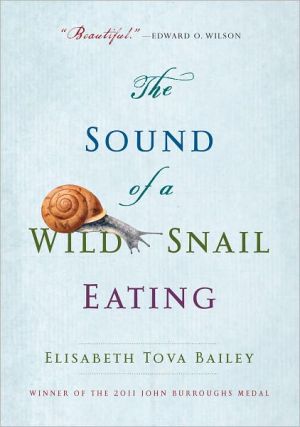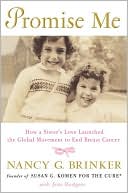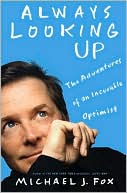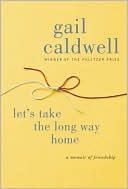The Sound of a Wild Snail Eating: A True Story
In a work that beautifully demonstrates the rewards of closely observing nature, Elisabeth Bailey shares an inspiring and intimate story of her uncommon encounter with a Neohelix albolabris —a common woodland snail. \ While an illness keeps her bedridden, Bailey watches a wild snail that has taken up residence on her nightstand. As a result, she discovers the solace and sense of wonder that this mysterious creature brings and comes to a greater under standing of her own confined place in the...
Search in google:
In a work that beautifully demonstrates the rewards of closely observing nature, Elisabeth Bailey shares an inspiring and intimate story of her uncommon encounter with a Neohelix albolabris —a common woodland snail. While an illness keeps her bedridden, Bailey watches a wild snail that has taken up residence on her nightstand. As a result, she discovers the solace and sense of wonder that this mysterious creature brings and comes to a greater under standing of her own confined place in the world. Intrigued by the snail’s molluscan anatomy, cryptic defenses, clear decision making, hydraulic locomotion, and mysterious courtship activities, Bailey becomes an astute and amused observer, providing a candid and engaging look into the curious life of this underappreciated small animal. Told with wit and grace, The Sound of a Wild Snail Eating is a remarkable journey of survival and resilience, showing us how a small part of the natural world illuminates our own human existence and provides an appreciation of what it means to be fully alive. Kirkus Reviews In this quiet but moving debut, essayist Bailey chronicles a year during which her fascination with the simple life of a snail kept isolation at bay and gave purpose to her life. At age 34, the author was struck by a neurological disorder while vacationing in the Alps, and her condition rapidly deteriorated as her autonomic nervous system became dysfunctional: "all functions not consciously directed . . . had gone haywire." In order to receive care, she was moved from the Maine farmhouse where she had lived with her dog to a bare, one-room studio apartment where she was isolated from friends and family. The snail entered her life by chance when a visiting friend potted a violet and brought it to her, including the snail that had been sitting beneath its leaves. Bailey watched intently as the creature began to explore its new environment. Since it was nocturnal and her sleep was intermittent, the author had time to observe the animal eating, noting the "tiny, intimate sound" as it chomped on dead leaves from the violet plant or mushroom slices that she gave it. When her caregiver found the appropriate empty space, her friend helped to convert it into a roomy terrarium full of native plants from the snail's own woods. Although she had not been familiar with the snail's habits before welcoming her new companion, Bailey learned about the species through careful observation and the few things she was able to read during her recovery. Watching the snail was not only absorbing, but as the author was drawn into its "peaceful and solitary world," she was soothed and left with a profound sense of how "life itself continues to evolve."A charming, delicate meditation on the meaning of life. Agent: Ellen Levine/Ellen Levine Literary Agency
Prologue \ Viruses are embedded into the very fabric of all life.\ - Luis P. Villarreal, "The Living and Dead Chemical Called a Virus," 2005\ From my hotel window I look over the deep glacial lake to the foothills and the Alps beyond. Twilight vanishes the hills into the mountains; then all is lost to the dark.\ After breakfast, I wander the cobbled village streets. The frost is out of the ground, and huge bushes of rosemary bask fragrantly in the sun. I take a trail that meanders up the steep, wild hills past flocks of sheep. High on an outcrop, I lunch on bread and cheese. Late in the afternoon along the shore, I find ancient pieces of pottery, their edges smoothed by waves and time. I hear that a virulent flu is sweeping this small town.\ A few days pass and then comes a delirious night. My dreams are disturbed by the comings and goings of ferries. Passengers call into the dark, startling me awake. Each time I fall back into sleep, the lake's watery sound pulls at me. Something is wrong with my body. Nothing feels right.\ In the morning I am weak and can't think. Some of my muscles don't work. Time becomes strange. I get lost; the streets go in too many directions. The days drift past in confusion. I pack my suitcase, but for some reason it's impossible to lift. It seems to be stuck to the floor. Somehow I get to the airport. Seated next to me on the transatlantic flight is a sick surgeon; he sneezes and coughs continually. My rare, much-needed vacation has not gone as planned. I'll be okay; I just want to get home.\ After a flight connection in Boston, I land at my small New England airport near midnight. In the parking lot, as I bend over to dig my car out of the snow, the shovel turns into a crutch that I use to push myself upright. I don't know how I get home. Arising the next morning, I immediately faint to the floor. Ten days of fever with a pounding headache. Emergency room visits. Lab tests. I am sicker than I have ever been. Childhood pneumonia, college mononucleosis - those were nothing compared to this.\ A few weeks later, resting on the couch, I spiral into a deep darkness, falling farther and farther away until I am impossibly distant. I cannot come back up; I cannot reach my body. Distant sound of an ambulance siren. Distant sound of doctors talking. My eyelids heavy as boulders. I try to open them to a slit, just for a few seconds, but they close against my will. All I can do is breathe.\ The doctors will know how to fix me. They will stop this. I keep breathing. What if my breath stops? I need to sleep, but I am afraid to sleep. I try to watch over myself; if I go to sleep, I might never wake up again.\ 1. Field Violets\ at my feetwhen did you get here?snail\ - Kobayashi Issa (1763 - 1828)\ In early spring, a friend went for a walk in the woods and, glancing down at the path, saw a snail. Picking it up, she held it gingerly in the palm of her hand and carried it back toward the studio where I was convalescing. She noticed some field violets on the edge of the lawn. Finding a trowel, she dug a few up, then planted them in a terra-cotta pot and placed the snail beneath their leaves. She brought the pot into the studio and put it by my bedside.\ "I found a snail in the woods. I brought it back and it's right here beneath the violets."\ "You did? Why did you bring it in?"\ "I don't know. I thought you might enjoy it."\ "Is it alive?"\ She picked up the brown acorn-sized shell and looked at it. "I think it is."\ Why, I wondered, would I enjoy a snail? What on earth would I do with it? I couldn't get out of bed to return it to the woods. It was not of much interest, and if it was alive, the responsibility - especially for a snail, something so uncalled for - was overwhelming.\ My friend hugged me, said good-bye, and drove off.\ At age thirty-four, on a brief trip to Europe, I was felled by a mysterious viral or bacterial pathogen, resulting in severe neurological symptoms. I had thought I was indestructible. But I wasn't. If anything did go wrong, I figured modern medicine would fix me. But it didn't. Medical specialists at several major clinics couldn't diagnose the infectious culprit. I was in and out of the hospital for months, and the complications were life threatening. An experimental drug that became available stabilized my condition, though it would be several grueling years to a partial recovery and a return to work. My doctors said the illness was behind me, and I wanted to believe them. I was ecstatic to have most of my life back.\ But out of the blue came a series of insidious relapses, and once again, I was bedridden. Further, more sophisticated testing showed that the mitochondria in my cells no longer functioned correctly and there was damage to my autonomic nervous system; all functions not consciously directed, including heart rate, blood pressure, and digestion, had gone haywire. The drug that had previously helped now caused dangerous side effects; it would soon be removed from the market.\ When the body is rendered useless, the mind still runs like a bloodhound along well-worn trails of neurons, tracking the echoing questions: the confused family of whys, whats, and whens and their impossibly distant kin how. The search is exhaustive; the answers, elusive. Sometimes my mind went blank and listless; at other times it was flooded with storms of thought, unspeakable sadness, and intolerable loss.\ Given the ease with which health infuses life with meaning and purpose, it is shocking how swiftly illness steals away those certainties. It was all I could do to get through each moment, and each moment felt like an endless hour, yet days slipped silently past. Time unused and only endured still vanishes, as if time itself is starving, and each day is swallowed whole, leaving no crumbs, no memory, no trace at all.\ I had been moved to a studio apartment where I could receive the care I needed. My own farmhouse, some fifty miles away, was closed up. I did not know if or when I'd ever make it home again. For now, my only way back was to close my eyes and remember. I could see the early spring there, the purple field violets - like those at my bedside - running rampant through the yard. And the fragrant small pink violets that I had planted in the little woodland garden to the north of my house - they, too, would be in bloom. Though not usually hardy this far north, somehow they survived. In my mind I could smell their sweetness.\ Before my illness, my dog, Brandy, and I had often wandered the acres of forest that stretched beyond the house to a hidden, mountain-fed brook. The brook's song of weather and season followed us as we crisscrossed its channel over partially submerged boulders. On the trail home, in the boggiest of spots, perched on tiny islands of root and moss, I found diminutive wild white violets, their throats faintly striped with purple.\ These field violets in the pot at my bedside were fresh and full of life, unlike the usual cut flowers brought by other friends. Those lasted just a few days, leaving murky, odoriferous vase water. In my twenties I had earned my living as a gardener, so I was glad to have this bit of garden right by my bed. I could even water the violets with my drinking glass.\ But what about this snail? What would I do with it? As tiny as it was, it had been going about its day when it was picked up. What right did my friend and I have to disrupt its life? Though I couldn't imagine what kind of life a snail might lead.\ I didn't remember ever having noticed any snails on my countless hikes in the woods. Perhaps, I thought, looking at the nondescript brown creature, it was precisely because they were so inconspicuous. For the rest of the day the snail stayed inside its shell, and I was too worn out from my friend's visit to give it another thought.
\ From Barnes & NobleWho would have imagined that a tiny, slow (literally snail-paced) forest creature could become the inspiration of a fascinating book? Elisabeth Tova Bailey's encounter with Neohelix albolabris, the common woodland snail, began with a friend's inexplicable sickbed gift, but escalates pleasantly into an encounter as enlightening as it is entertaining. (Who knew, for instance, that these diminutive slugs expend a third of their energy each day producing an impressive variety of slime products?) The Sound of a Wild Snail Eating begins as a surprise and ends as a revelation.\ \ \ \ \ \ People Magazine"The author found solace--and good material--in watching a snail." --People magazine\ \ \ \ NPR.org"Though illness may rob us of vitality, sometimes it can also help bring us understanding---albeit in improbable disguises . . . Perhaps there's something to be said for moving at a snail's pace." --NPR.org\ \ \ \ \ \ Library JournalBailey, writer and artist, suddenly contracted a mysterious disease 15 years ago. In place of the strong, active, vibrant individual she had been, Bailey found herself forced by the physical constraints of the disease to move from her home in the New England countryside into a small efficiency apartment, and for several more she was confined to bed, too weak to move. To cheer her up, a friend presented her with a gift of wild forest violets accompanied by a forest snail found in the woods. Bailey quickly developed a passion for the little creature in the pot, and later terrarium, next to her and daily spent hours closely observing its life in minute detail. The fascination deepened as she recovered some of her health and was able to dig into the scientific research on snails. This work captures Bailey's frustration and puzzlement with the challenge of her unknown physical disease without the reader's noticing—the focus is on the snail. As noted in the epilog, seven years after the ailment began, the final diagnosis was determined: mitochondrial disease. VERDICT A small, short book filled with an enormous amount of natural history and science about snails; also, an acknowledgment of an individual's determination to recover and regain life with humor and insight. Highly recommended.—Michael D. Cramer, Schwarz BioSciences, RTP, NC\ \ \ \ \ Kirkus ReviewsIn this quiet but moving debut, essayist Bailey chronicles a year during which her fascination with the simple life of a snail kept isolation at bay and gave purpose to her life. At age 34, the author was struck by a neurological disorder while vacationing in the Alps, and her condition rapidly deteriorated as her autonomic nervous system became dysfunctional: "all functions not consciously directed . . . had gone haywire." In order to receive care, she was moved from the Maine farmhouse where she had lived with her dog to a bare, one-room studio apartment where she was isolated from friends and family. The snail entered her life by chance when a visiting friend potted a violet and brought it to her, including the snail that had been sitting beneath its leaves. Bailey watched intently as the creature began to explore its new environment. Since it was nocturnal and her sleep was intermittent, the author had time to observe the animal eating, noting the "tiny, intimate sound" as it chomped on dead leaves from the violet plant or mushroom slices that she gave it. When her caregiver found the appropriate empty space, her friend helped to convert it into a roomy terrarium full of native plants from the snail's own woods. Although she had not been familiar with the snail's habits before welcoming her new companion, Bailey learned about the species through careful observation and the few things she was able to read during her recovery. Watching the snail was not only absorbing, but as the author was drawn into its "peaceful and solitary world," she was soothed and left with a profound sense of how "life itself continues to evolve."A charming, delicate meditation on the meaning of life. Agent: Ellen Levine/Ellen Levine Literary Agency\ \








